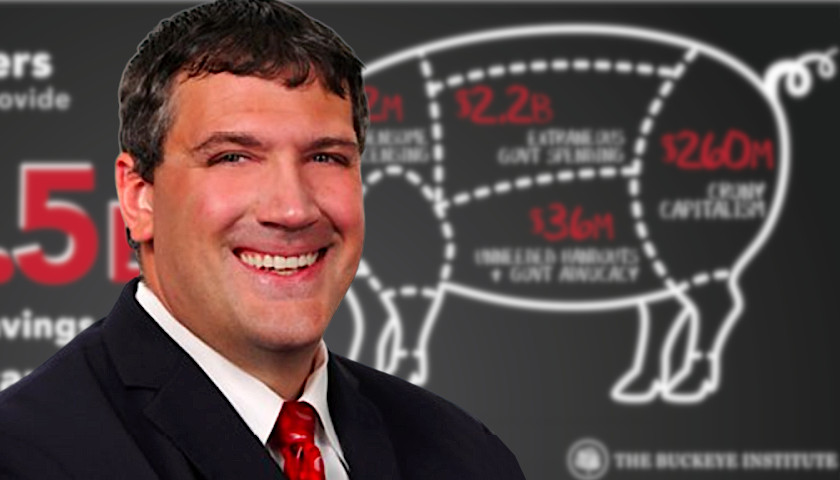The Buckeye Institute released its annual Piglet Booklet Wednesday, which identifies wasteful government spending across state agencies that could save Ohio taxpayers $2.5 billion.
“In this year’s Piglet Booklet, The Buckeye Institute identified at least $2.5 billion that policymakers can save Ohioans. And with the increase in the gas tax, it is critical to cut spending and taxes to relieve the growing burden on Ohio families,” said Greg Lawson, research fellow at The Buckeye Institute and author of the report.
“ Making these cuts will save Ohio taxpayers money, make government more efficient and effective, and keep the state on solid financial ground to better weather the next economic storm,” Lawson continued.
Making these cuts will save Ohio taxpayers money, make government more efficient and effective, and keep the state on solid financial ground to better weather the next economic storm,” Lawson continued.
The Piglet Booklet identifies four key areas where government spending and oversight can be reduced, including corporate welfare programs, government philanthropy and advocacy, burdensome occupational licensing regimes, and earmarks in spending bills.
“Governments should not engage in crony capitalism by supporting one private company over another—it is ethically inappropriate and economically harmful,” the report says of the corporate welfare category.
It identifies eight different “corporate welfare programs that should be eliminated,” such as the $3.1 million that is used to conduct “marketing on behalf of the state’s wine grape growers,” or the $20 million spent on TourismOhio, a “marketing program for Ohio’s tourism industry funded by the state sales tax.”
The report then provides a list of four “government-sponsored philanthropy and public advocacy groups” that cost the state $36 million and should be eliminated. The Ohio Arts Council, for instance, receives $33 million from the state to redistribute to “artists and galleries that the government selects, making the state an arbiter of artistic taste and culture.”
The Piglet Booklet also recommends the elimination of some occupational licensing requirements that “force too many Ohioans to ask the state for permission to work and earn a living in their chosen professions.”
“Ohio can eliminate at least two licensing boards that currently cost the state more than $2 million per year to run,” the report continues, listing the state’s auctioneer license requirement and the Motor Vehicle Repair Board as potential programs to be eliminated.
While the report notes that Gov. Mike DeWine’s budget proposal does not “currently contain earmarks, history advises that the budget will add funding for individual, parochial projects as it winds its way through the legislative process.”
“Such projects should not be added to the budget. As The Buckeye Institute’s report on the capital budget explains, a taxpayer in Glenford should not be subsidizing construction of a local municipal park in Columbus or vice versa,” the report recommends.
The Piglet Booklet concludes by urging DeWine and the Ohio General Assembly to “revisit their spending plan for Fiscal Years 2020 and 2021 and adjust or cap spending growth rates, focus spending on core government functions, and cut out the remaining pork.”
“Doing so will save Ohio taxpayers money, make government more efficient and effective, and keep the state on solid financial ground to better weather the next economic storm,” the report states. “Failure to do so risks broken campaign promises, perpetuating unsustainable budgets, and all-but-guaranteeing a fiscally unstable future.”
The Buckeye Institute’s full Piglet Booklet can be read here.
– – –
Anthony Gockowski is managing editor of Battleground State News, The Ohio Star, and The Minnesota Sun. Follow Anthony on Twitter. Email tips to [email protected].
Photo “Greg Lawson” by Greg Lawson. Background Photo “Savings Chart” by Buckeye Institute.





